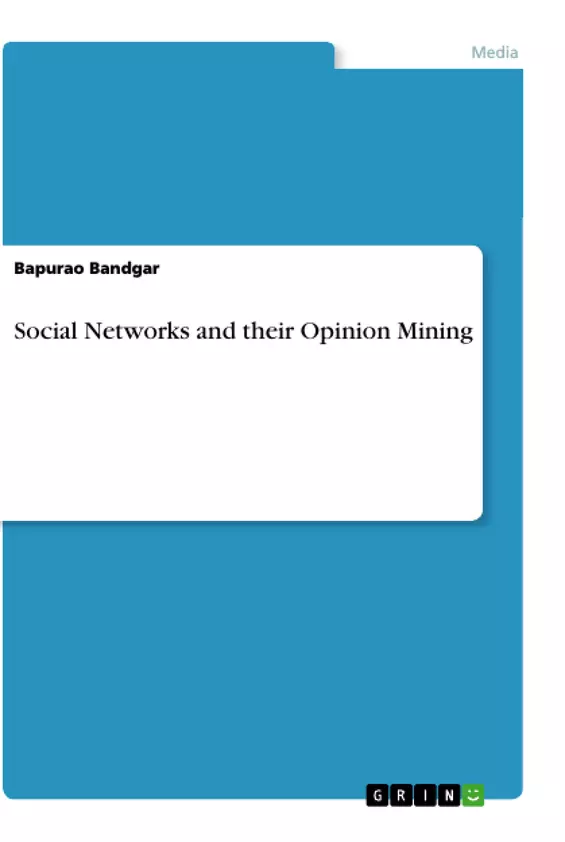Social media content has stirred much excitement and created abundant opportunities for understanding the opinions of the general public and consumers toward social events, political movements, company strategies, marketing campaigns, and product preferences. Many new and exciting social, geo political, and business-related research questions can be answered by analyzing the thousands, even millions, of comments and responses expressed in various blogs, forums, social media and social network sites, virtual worlds, and tweets. This is one of the good medium to explore the opinion of people about the particular event and so that this may help in the making any business decisions or the feedback about political activities to be carried out in future.
Therefore, we extracted the real time tweets on the social tweet keyword from the twitter web site, news website etc. using the twitter 4j Libraries and their API’s and JSOUP Libraries for obtaining the real time tweets from the respective web sites for English keyword only. These tweets are preprocessed and obtained the keyword related sentences only. These preprocessed tweets further used for the removal of
slang, hash, tags and URL and the removal of stop words. We also used the abbreviations and emoticon conversion to get corresponding complete meaning full message from tweets.
The processed tweets are further classified using three unstructured models EEC, IPC and SWNC. The results of these models are compared by obtaining the confusion matrix and their parameter such as precision, recall and accuracy. The SWNC model showed good result of classification over the EEC and IPC. Further the Hybrid model is used to reduce the number of the neutral tweets and obtained the corresponding results and shown by pie graph. By comparing the results of the SWNC model and the Hybrid model, it is observed that the numbers of neutral tweets are reduced in Hybrid model. The % range of reduction is around 20 - 25% in comparison with the SWNC model. Thus, we classified the real time social tweets using unstructured and their hybrid models. For obtaining these results, we developed the windows based indigenous, integrated and user friendly application in java and using NetBean’s framework.
Inhaltsverzeichnis (Table of Contents)
- INTRODUCTION
- Introduction
- What is Social Network Analysis?
- Motivation and Problem Statement
- Objectives
- Outline of Thesis
- LITERATURE REVIEW
- Introduction
- Apriori-Based Approach
- Pattern-Growth Approach
- Survey and Techniques of Frequent Pattern Mining
- Survey and Techniques of Online Social Networks
- Survey on Opinion Mining
- Summary
- AN ANALYSIS OF SOCIAL NETWORK DATA USING GEPhi
- Introduction
- Features
- Real-time Visualization
- Layout
- Metrics
- Dynamic Network Analysis
- Create Cartography
- Clustering and Hierarchical graphs
- Dynamic filtering
- User-centric
- Modular
- Plug-in center
- Implementation of Gephi to Social Network data
- Data Collection and Experimental Details
- Results and Discussion
- Summary
- TOOLS AND TECHNIQUES USED FOR EXTRACTION AND PROCESSING OF THE REAL TIME TWEETS
- Introduction
- Twitter 4j Library
- System Requirements
- How To Use
- Download
- Source Code
- Maven Integration
- Tweet search method by GET search/tweets in API V1.1
- JSOUP JAVA Libraries
- Parsing and traversing a Document
- Parse a document from a String
- Parsing a body fragment
- Extract attributes, text, and HTML from elements
- Sanitize untrusted HTML (to prevent XSS)
- Netbeans IDE 8
- Working with NetBeans Modules
- Processing of tweets
- Senti WordNet
- History and team members
- Database contents
Zielsetzung und Themenschwerpunkte (Objectives and Key Themes)
This research explores the evolution of social networks and their opinion mining using sentiment analysis. The study aims to analyze the dynamics of online social networks, understand how opinions are formed and expressed within these networks, and develop techniques for extracting and analyzing sentiment from social media data.
- Social network analysis and its applications
- Opinion mining and sentiment analysis
- Data collection and analysis techniques
- Evolution of online social networks
- Applications of sentiment analysis in social media
Zusammenfassung der Kapitel (Chapter Summaries)
The first chapter introduces the concept of social network analysis and provides a detailed explanation of the motivation and problem statement behind this research. It also outlines the objectives and the structure of the thesis. Chapter 2 reviews existing literature on the topic, focusing on apriori-based and pattern-growth approaches for frequent pattern mining, techniques for online social networks, and existing methods for opinion mining. Chapter 3 explores the use of Gephi as a tool for analyzing social network data, including its features, implementation, and the results obtained from the analysis.
Chapter 4 focuses on the tools and techniques used for extracting and processing real-time tweets. It discusses the Twitter 4j library, JSOUP Java libraries, and the use of Netbeans IDE 8 for processing tweets. The chapter also delves into the use of Senti WordNet for sentiment analysis.
Schlüsselwörter (Keywords)
The research focuses on key concepts such as social network analysis, opinion mining, sentiment analysis, frequent pattern mining, online social networks, data extraction and processing, Twitter 4j library, JSOUP Java libraries, Senti WordNet, Gephi, and real-time tweet analysis.
- Citation du texte
- Dr Bapurao Bandgar (Auteur), 2019, Social Networks and their Opinion Mining, Munich, GRIN Verlag, https://www.grin.com/document/512868



